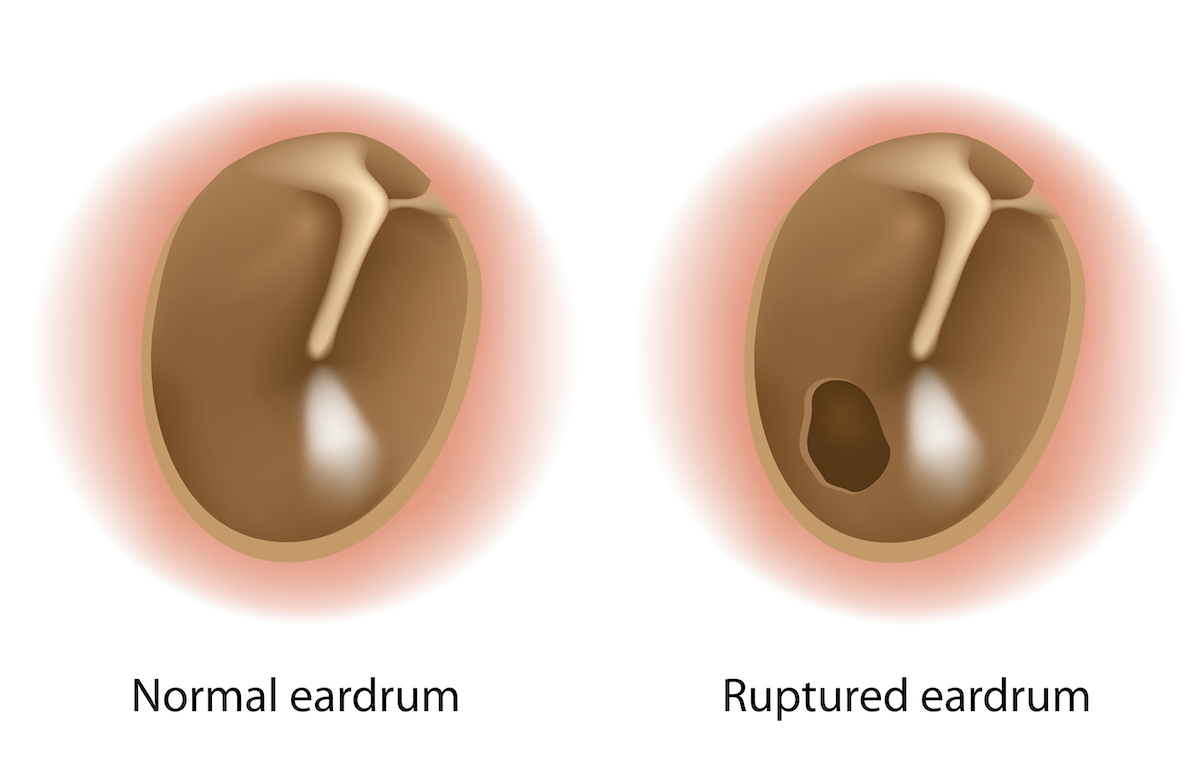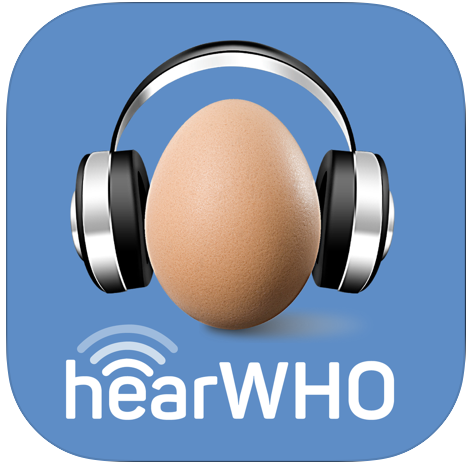Conditions: Hearing
Hearing is social, safe, and convenient. In addition to these benefits of hearing well, good hearing helps keep the mind sharp. Untreated hearing loss promotes the development of dementia because hearing stimulates the brain. In other words, hearing health is brain health. Below is information on hearing conditions. Click on the button to the right to be redirected to the page for information on treatments for hearing loss.
hearing loss requiring urgent evaluation
Sudden hearing loss requires evaluation. Fortunately the vast majority of sudden hearing losses are due to something disrupting the mechanical conduction of sound energy to the inner ear, such as fluid behind the ear drum. In the minority of cases when the cause of sudden hearing loss is found to be a problem with the inner ear, urgent measures are taken. An infection of the cochlea (hearing part of the inner ear) is one relatively frequent cause of sudden inner ear (sensorineural) hearing loss, and timely treatment is needed to minimize any permanent hearing loss. Other causes of sudden sensorineural hearing loss include Meniere’s disease and a type of benign tumor (acoustic schwannoma) that pinches the hearing nerve. These are part of the evaluation, but the timeliness of the infectious cause drives the urgency of this condition.
understanding hearing and hearing loss
Hearing physiology: Sound waves pass through the ear canal and strike the eardrum, causing vibrations that move the three connected bones that bridge from the eardrum to the inner ear. The vibrations are mechanically transmitted to the inner ear, which then converts this mechanical energy into a nerve signal to the brain.
The hearing mechanism converts sound waves into electrical signals that are input into the brain. Here is an excellent video from the National Institutes of Health briefly explaining the process. Any type of disruption of this process, anywhere from the outer ear to the brain leads to hearing loss, with specific conditions discussed below.
Main categories of hearing loss: conductive and sensorineural
Conductive hearing loss and sensorineural hearing loss are two distinct types of hearing impairment, each with different causes and mechanisms.
Conductive Hearing Loss occurs when sound is not adequately conducted through the outer ear canal to the eardrum and the tiny bones of the middle ear. This type of hearing loss can result from various factors, including:
Ear infections (otitis externa and otitis media)
Fluid accumulation in the middle ear (which may be caused by Eustachian tube dysfunction)
Structural abnormalities in the outer ear or middle ear
Individuals with conductive hearing loss often experience a reduction in sound level or the ability to hear faint sounds. In many cases, this type of hearing loss can be treated with medical or surgical interventions.
Sensorineural Hearing Loss, on the other hand, involves damage to the inner ear (the cochlea) or the auditory nerve pathways that lead to the brain. This type of hearing loss typically results from:
Aging
Noise exposure
Genetic factors
Certain diseases (such as otosclerosis or Meniere's disease)
Head trauma
Exposure to drugs or other chemicals that damage the cochlea (such as amino glycoside antibiotics, some malaria medications, and non-steroidal anti-inflammatory drugs like ibuprofen)
Sensorineural hearing loss usually presents as a decrease in sound clarity and an inability to distinguish certain frequencies. It is generally permanent but may benefit from hearing aids or hearing implant, like Osia or a cochlear implant.
Mixed Hearing Loss is a combination of conductive and sensorineural hearing loss in an ear.
Hearing loss due to fluid or pressure behind the ear drum
Normally, the ear drum moves easily to and fro when sound waves strike it because it is surrounded by air of equal pressures on both of its sides. If the air pressure on one side is greater than that on the other side, the ear drum is stretched tight toward the lower pressure. This stretch dampens the ear drum’s ability to vibrate, which decreases the movement of the three bones (ossicles), leading to a dampening of the sound signal. Similarly, fluid behind the eardrum is an even stronger dampening agent by severely limiting the ear drum’s ability to vibrate.
Hearing Loss due to a hole in the eardrum (tympanic membrane perforation)
The eardrum, or tympanic membrane, is a very thin sheet of tissue at the deep end of the ear canal. This acts as a receptor of sound waves (air pressure waves). A hole in the tympanic membrane makes it less efficient at collecting this sound energy and transmitting it to the bones of the middle ear. Larger tympanic membrane perforations lead to greater hearing loss than small perforations. In the setting of Eustachian tube dysfunction, however, it may be better to have a tympanic membrane perforation than not.
hearing loss due to the inner ear (sensorineural hearing loss)
The hair cells of the inner ear (cochlea) detect a amazingly wide range of sound intensities, but despite this capacity, the mechanical trauma of with loud or loud and extended duration of sounds permanently damages the fine finger-like receptors (cilia) on the hard cells. Since the cochlea is the organ that converts mechanical sound energy into nerve impulses, hearing loss due to cochlear failure is called sensorineural hearing loss. Other types of damage to the cochlea (such as from an infection) or to the nerve transmitting the signal to the brain (such as a benign growth pinching the nerve and its blood supply) also cause sensorineural hearing loss. §§
hearing loss due to wax or other blockage of the ear canal
Complete or near-complete blockage of the ear canal is necessary for dampening of sound waves. For this reason, a partial build-up of wax allows air pressure waves to pass efficiently to the ear drum without causing hearing loss. Occasionally, and unadvisedly, someone using a Q-tip will push wax into a complete barrier and experience hearing loss until the wax is properly removed. Water in the ear canal, or an ear plug made for the purpose of reducing sound energy work by the same mechanism, simply shielding the eardrum from air pressure wave energy.
hearing loss from a tumor or problem with the acoustic nerve
Once sound waves have been converted to nerve signals by the ear, a nerve, the acoustic nerve, conducts the signal to the brain. This nerve runs along with the inner ear balance nerve through a narrow bony canal at the base of the skull. Conditions impairing this nerve (called the vestibulocochlear nerve) can affect hearing as well as balance. One condition is inflammation of the nerve (neuritis), which may be due to a virus. Another cause is any type of growth that pinches the nerve and it’s blood supply within the narrow boney canal (internal auditory canal). Most common among these benign nerve pinching growths is one called an acoustic neuroma or vestibular schwannoma. Damage to the vestibulocochlear nerve can cause hearing loss, poor word understanding, sound in the ear (such as ringing or buzzing) and/or dizziness. It can occur gradually over time or suddenly. Examination and a formal hearing test are the first steps in diagnosis. Interestingly, word understanding deteriorates more quickly than simple sound detection when the acoustic nerve is injured, and this specific measure is included in a formal audiogram test.
Auditory processing disorder
Auditory processing disorder is a general term for conditions in which the ears are normal, but the brain has trouble processing the information. Auditory processing is "what we do with what we hear", and in auditory processing disorder, there is a mismatch between peripheral hearing ability (which is typically normal) and ability to interpret or discriminate sounds. Thus in those with no signs of neurological impairment, auditory processing disorder is diagnosed on the basis of auditory tests. Most commonly, the challenge is in recognizing and interpreting sounds, especially the sounds composing speech. One of the most common listening problems is speech recognition in the presence of background noise. Auditory processing disorder can occur in children and adults, and is estimated to affect roughly 5% of the population.
An app to test your hearing, provided by the world health organization
While there is no substitute for a formal audiogram performed by an audiologist, The World Health Organization has developed the free hearWHO app for available on the App Store or Google Play. The app is based on a validated digits-in-noise technology: users are asked to concentrate, listen, and enter into their mobile device a series of three numbers when prompted. These numbers have been recorded against varying levels of background sound, simulating listening conditions in everyday life. The app displays the user’s score and its meaning and stores the outcome of the test so that the user can monitor hearing status over time. Reminders to take the test regularly can be set by users. The app can be used by individuals as well as health providers with a view to facilitating hearing screening.
how to get the most from your appointment for hearing
Appointment time is valuable. Here are some suggestions to make the most of your appointment. This preparation will help you and your doctor maximize efficiency and accuracy, freeing up time for questions and answers.
• Click here to prepare for your hearing loss appointment (adult)
This page











